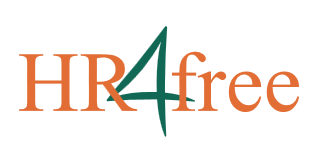The aim of a recruitment interview is to further discuss the information already gathered through the assessment of the candidate’s application documents (guidelines). Moreover, it will allow assessing the job candidate’s personal skills, which may be done by using professional tests or assessment center exercises. All this will contribute to determining the gaps between the candidate’s skills and the job requirements, which represents the end goal of the entire selection process (guidelines).
TOOLS
A recruitment interview is a complex communication process. It requires in the first place respect of others in terms of reciprocity in the exchange of information and an extensive use of active listening. This means that the recruiter should keep in mind what the diverse levels of the interview are and pay them a particular attention:
- The context of the interview: situation, players, rules…
- The contents of the interview: reference framework, language…
- Social interactions: attitudes, regulations (both verbal and non-verbal), influences…
Please note that the use of professional tests (assessment interview) that have been statistically calibrated and validated can offer additional information in an objective, reliable and value-neutral manner. Moreover, it will allow structuring and orienting the interview.
PRACTICE
A selection interview should go through the following steps:
- Welcome the candidate
- Present a summary of the job profile (or “job specifications”)
- Ask the questions
- Spot the candidate’s strengths and weaknesses (in relation to the job profile!)
- Conclude the interview
All along the interview, the recruiter may use diverse attitudes, depending on the candidate’s behavior. Thus, a somewhat reserved candidate may need more encouragements (directive attitude) than one who is more loquacious and for whom more reformulation and synthesis will be required.
The following schema shows the main attitudes that can be adopted in the course of an interview (illustration). Here are also a few basic rules that ought to be considered:
- Never ask 2 questions simultaneously; avoid asking questions that influence the candidate’s answer (by suggesting that a certain answer is the “correct” one)
- Respect moments of silence
- Avoid any kind of collusion with the candidate (affectivity bias)
- Avoid any kind of question regarding: the candidate’s origins, religion, marital life, maternity, sexuality, etc.
- Ask open questions – for example: “What can you do for us?”, “What kind of person are you?”, “Can we afford your services?”…
Finally, it can happen that, in spite of all your precautions, the interview takes a difficult turn. Generally speaking, it can then be useful to remind the candidate of:
- the context of the interview (temporal framework, rules of play…)
- the goal of the interview (exchange of information…)
- the use of ensuring a smooth running for the interview
EXAMPLES
Here is a list of difficult situations (illustration) that can arise in the course of a recruitment/selection interview, as well as possible ways of addressing them.







